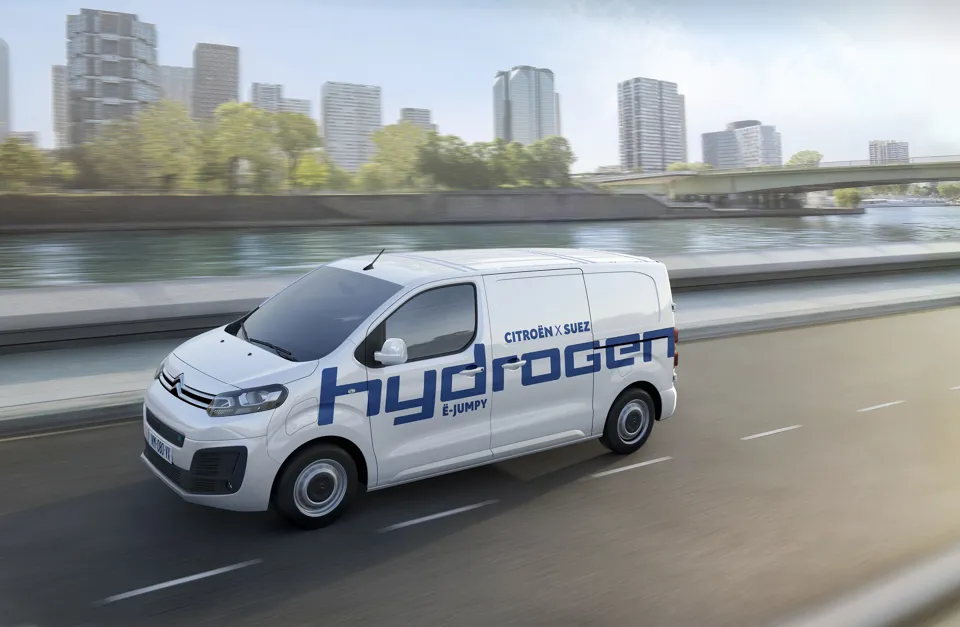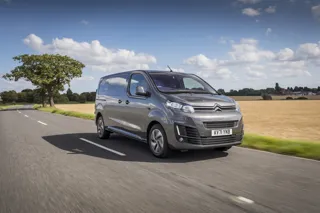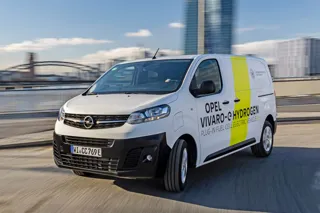The first Citroen e-Dispatch Hydrogen van will undergo fleet trials with the Suez Group at its Carcassonne facility in France.
The new Citroen e-Dispatch Hydrogen completes the brand’s electric light commercial vehicle (e-LCV) range, with the hydrogen solution aimed at customers that need a range of more than 186 miles (300km).
Citroen says that there is a wide range of target customers for this technology, including courier operators, undertaking ‘last mile’ deliveries and transportation over longer distances, as well as local authorities or manufacturing businesses.
The Suez Group trial comes as Vauxhall’s sister brand Opel announced its hydrogen van – the Vivaro-e Hydrogen – is joining Miele’s fleet in Germany, Opel and Miele’s domestic market.
Laurence Hansen, Citroen product and strategy director, said: “Complementing our electric portfolio, it will give customers a greater driving range especially on faster roads and optimise vehicles’ usage time thanks to its ultra-fast refuelling.
“Citroen is proud to be able to combine all the qualities that have made its thermal vehicles so successful, while adding the peace-of-mind of more environmentally-responsible, future-focused driving.
“With the current plans to develop hydrogen, this is a major new solution complementing the widest range of electric utility vehicles on the market.
“We are pleased to offer Suez – a privileged partner, strongly committed to reducing our environmental footprint – this first vehicle for full-scale testing under real conditions.”
The Citroen e-Dispatch Hydrogen has two complementary propulsion systems: a battery to store energy and supply electricity, and a fuel cell that converts hydrogen and the oxygen in the air into electricity, water and heat. As long as it is supplied with hydrogen, this power generator works continuously.
The electric motor, mainly powered by the 45kW hydrogen fuel cell, is therefore able to offer an extended driving range of nearly 217 miles (350km).
The 10.5kWh-rated lithium-ion battery acts as a back-up, able to cover 31 miles (50km) on the WLTP cycle. The combination of these two components ensures a driving range of about 248 miles (400km).
Filling Citroen e-Dispatch Hydrogen is 20 times faster than charging an electric vehicle (EV), based on charging at a 100kW public charging station, says the manufacturer.
Barely three minutes are therefore enough to fill up the three hydrogen tanks, which have a useful storage capacity of up to 4.4kg.
Citroen has also ensured the load volume of e-Dispatch Hydrogen is not affected by the integration of the battery and hydrogen tanks.
The battery has been installed under the seats in the cab area and the three hydrogen tanks are under the floor.
The useful load volumes of the two available models are therefore unchanged compared with the electric versions: 5.3m3 for the medium size and 6.1m3 for the XL. Similarly, the payload and towing capacity can reach up to 1,000kg, in line with the diesel versions.
Suez Group wants to make low-carbon mobility a key component of its carbon strategy, which aims to reduce the Group’s CO2 emissions by 45% by 2030.
With more than 200 electric vehicles, SUEZ wants to step up the replacement of its fleet with vehicles that have low greenhouse gas emissions, to ensure greener mobility for light and utility vehicles and tipper trucks.
The first e-Dispatch Hydrogen will be delivered shortly for a two-week trial and comes after the two companies recently collaborated for the launch of Ami Cargo Electric, with 10 vehicles joining the Suez fleet.
> Interested in comparing electric vehicle data? Check out our EV tool.
> Interested in ensuring the efficient use of EVs. Check out our dedicated editorial sections: Insight & policy | EV news | Charging & infrastructure | Costs & incentives | Benefit-in-kind | EV case studies | EV road tests
























Login to comment
Comments
No comments have been made yet.